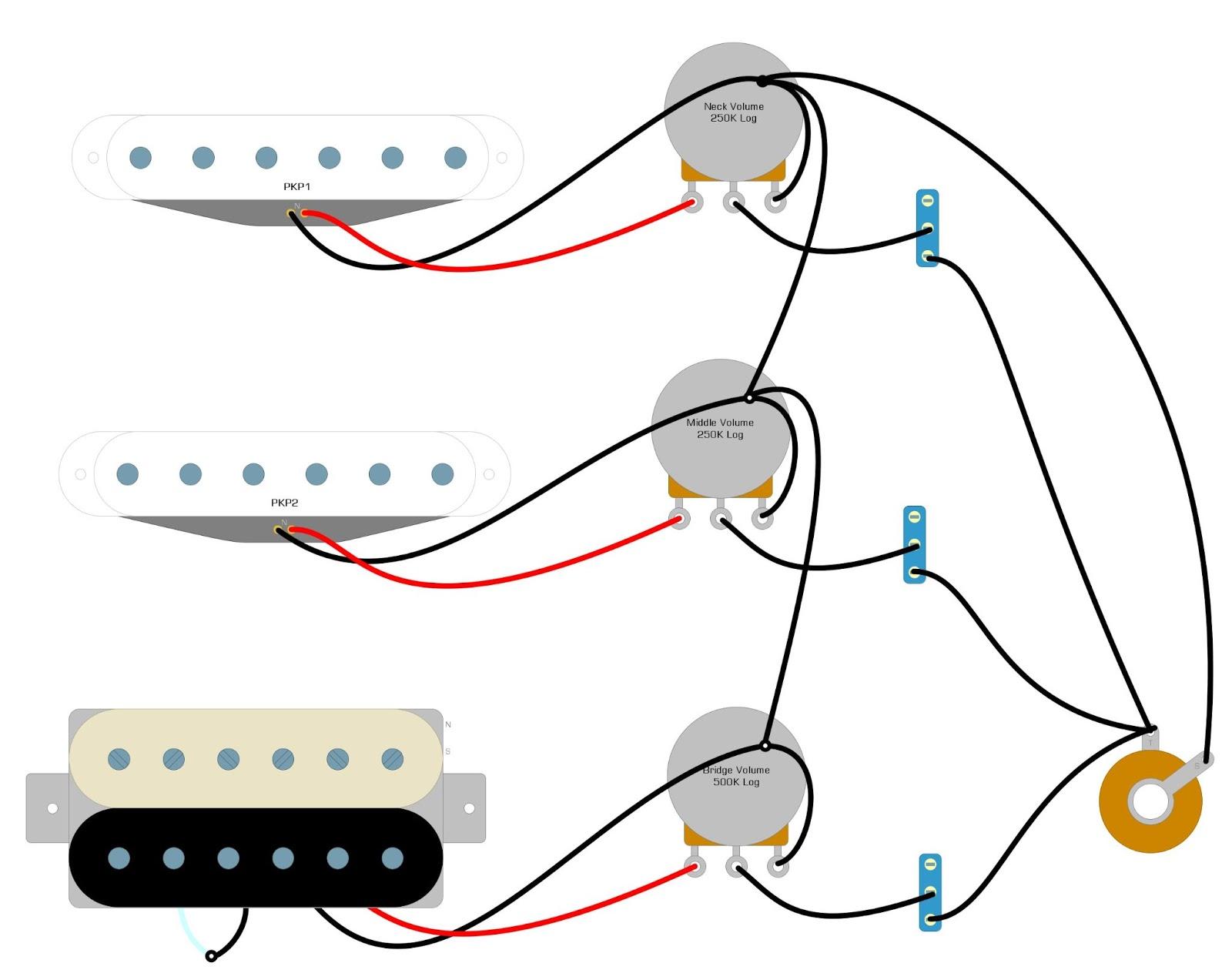
By Ed Malaker
Posted 06/17/2025
Question
Hi Humbucker Soup,
Can you please write up the wiring schematic or direct me to someone who can for my guitar? It’s a Charvel with 1 humbucker and 2 single-coils with 3 mini switches. The mini switches are single pole single throw. They have only 3 solder points on each one. I have been wiring guitars for years but never with switches like this. There are 3 pots and 3 switches. If each pot was a volume and the switch turned each pickup on and off that would be fine, or if you had a better or more useful way to do it that would be great. Any information would be appreciated. Thank you for taking my request. My email is printed above. Thanks again.
Answer
Hello Mike, thank you for the great question. This configuration sounds like it offers plenty of functionality. I’ve created a diagram so the three mini switches will turn the pickups on and off, and each will have dedicated volume controls. The only upgrade you might want to consider that I can think of is a coil-split mod, which will allow you to shut off one of the coils in your humbucker to get a single-coil tone. We have several versions of this mod on Humbucker Soup, and I can even create a diagram for you. It requires a humbucker with four colored wires and one bare wire. You will also need to convert the bridge volume control to a push-pull pot which is not difficult, and it’s easy to find at most music stores or online.
About the Switches
I thought I would take a second to help you understand the switches a little better so you will know what to do if you see others with more or fewer tabs. In switch lingo, pole means switch, so a Double Pole is two switches in one. A Single Pole is a single switch.
The throw is how many stops the switch makes. Most switches have an up and down position, and some might have a middle position too, but it can be a little confusing when talking about a single throw. For each throw, two of the solder points (lugs) are active. A single-pole single-throw switch will have two lugs, and a single-pole double-throw will have three lugs. I used a single-pole double-throw switch in the diagram since you described three solder points, but you don’t need the third and can ignore it if you only have two.
The middle and bottom lugs are active when a single pole double throw switch is in the up position. When it’s in the down position, the top and middle lugs are active. You could solder one pickup to the top lug and another to the bottom with a wire running from the center to the output jack to switch between pickups. You could also solder the top lug to the input jack of one amp and the bottom lug to another. If you solder your guitar to the center lug, you can use the switch to flip between amps as you play.
A double-pole double-throw switch will have another row of three lugs. These are much more common because they are about the same price and offer more flexibility but are a little more confusing to a novice that doesn’t understand it’s actually two single-pole double-throw switches in one, and each is independent. You would use one of these if you wanted an LED to turn on when you selected a pickup, for instance.
Hopefully, I didn’t make switches more confusing.
About the Diagram
I wasn’t sure about what kind of pickups you are using, so in the diagram, the red wires coming from the pickups are the HOT, and the black wires are the GROUND. Single-coils often use black and white wires, and white is usually HOT. Humbucker can use various combinations, and red might be HOT for one pickup and GROUND for the next. You will need to consult the documentation for your pickup to find the HOT and GROUND wires. If your pickup only has two wires, it will be the same wiring as a single-coil, and you only need to pay attention to the red and white wires in the diagram.
Here’s the Diagram
I hope this gets you on your way. Let us know if you have any other questions, and thanks for reading Humbucker Soup!

